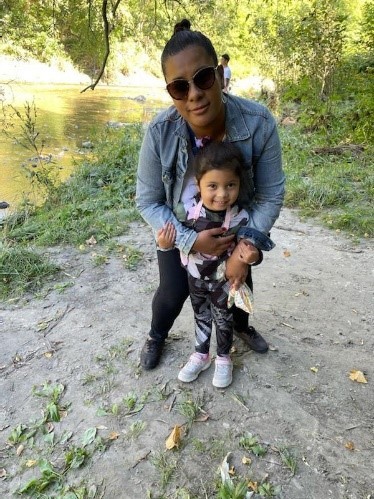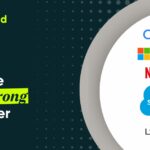Learning and Unlearning: Our DEI story
28 Oct 2021

There isn’t a one-size-fits-all playbook for rolling out a successful diversity, equity, and inclusion program at the workplace. But you quickly learn once you begin the journey that there is no going back.
It’s a lifelong commitment. For us, it was no different.
We started with the intent of building a DEI strategy and plan. However, after six months of employee and executive engagement, various iterations, brainstorming sessions, and too many cups of coffee—we realized that what we were working towards as an organization was business transformation.
Eight months later, we now recognize that a well-executed DEI strategy is the impetus for a lifelong commitment to doing the hard work of transforming an organization for the better.
How did we begin our DEI journey?
We began with a collective commitment from employees eager to make an impact (including one of our executive leaders who had personally and professionally experienced the need for equality and inclusion in the workplace and the marketing industry). These keen employees were the original members of the newly formed DEI committee.
Getting employee commitment and executive buy-in taught us our first lesson—a successful DEI strategy requires lobbyists and, more importantly, alignment at the executive level.
“Our company has always had such a global footprint and reach, yet we still had strides when it came to bringing in talent that we have never tapped into. We knew that bridging gaps from a diverse world and cultural experiences would make our company better and make our clients more successful. I believe our organization’s intention was always there to create an equitable and diverse workforce, but now we were setting the framework to make accountable actions towards our purpose.”
–Maredol Sarne, Talent Acquisition Senior Specialist and original DEI committee member.

Next, the committee surveyed employees to define what DEI meant for them. The responses poured in and were packed with meaningful stories of employees’ perspectives and experiences. Collectively, these responses would serve as the definition that we adopted. These definitions would act as NorthStar for all our DEI efforts. We ended up with the following statements:
- Diversity is the presence of different cultural perspectives, ideas, backgrounds, and beliefs within our workplace. Bringing these different characteristics together guarantees unique voices and perspectives.
- Equity is about equal access to resources, benefits, outcomes, and opportunities regardless of race, sexual orientation, ethnicity, heritage, etc. It’s about giving people the same opportunities to succeed.
- Inclusion is about feeling welcomed, respected and being a part of the group regardless of one’s differences or particularities. It means we accept and fully embrace what makes each and every one of us unique.
By defining and mutually reinforcing these principles within our organization, we expect that DEI will become embedded in the fabric of our organization in the long term.
Our people will change. Our makeup as an organization will alter. Our actions and intentions will change.
All for the better.
What have we learned so far?
So, what are the specific lessons for anyone about to begin their DEI journey?
First, you’ll need to give your employees the paid time and space to contribute to DEI initiatives. You don’t want individuals feeling guilty because it looks like they are deprioritizing work to participate in improving diversity, equity, and inclusion practices.
Making it easy for your people to participate not only alleviates the pressure to fit in DEI work in an already packed calendar. It also signals a broader organizational commitment to improving DEI in your workplace.
Following that, we also learned that transparency could act as a robust foundation for accountability. Your DEI metrics and goals must be visible to everyone—employees and customers alike.
From sharing and discussing where you are coming from to sharing your future and plans and present landscape, both internal and external stakeholders want authenticity over artificial performative diversity claims.
Action is more important than intention. And your stakeholders can quickly sniff out the disconnect if you are playing to the gallery.
“Instead of brands having the ultimate decision in who they hire, we’re amid a beautiful shake-up where job seekers get to decide which companies deserve their candidacy. In creating a DEI strategy, we were committed to putting in the work first before promoting and marketing our story. As conscious consumers, jobseekers see through flashy performative diversity marketing and will ultimately move on, or worse, let the world know. We aspired to do better. We wanted our story to reflect our reality.”
Katie Appleby, Organizational Effectiveness Lead, and original DEI committee member

Perhaps, the most significant knowledge we can offer is that you must avoid asking underrepresented employees to bear the responsibility of educating non-marginalized employees. We didn’t learn this the hard way but instead had read countless stories of people who were asked to do the work for others and the subsequent pressure or burden it had caused. Fortunately, for those of you starting out in DEI planning, there are a plethora of learning resources available, and many of them are free. Here are only but a few resources available we have found most helpful:
- The Indigenous Corporate Training Inc
- The Canadian Aboriginal and Minority Supplier Council (CAMSC)
- Canada’s LGBT+ Chamber of Commerce
- Following and subscribing to DEI experts on LinkedIn.
Mentioning underrepresented employees brings us to our final lesson. Focusing on diversity alone is insufficient because an employee’s sense of belonging (inclusion) and experience of fairness (equity) is critically important.
In closing out these lessons learned, spoken from the community of our employees, “Diversity, equity and inclusion are mere words. They are compelling concepts that live not just on paper, but that affect how people feel about themselves, about their team, about their work and about the community within which they live.”



